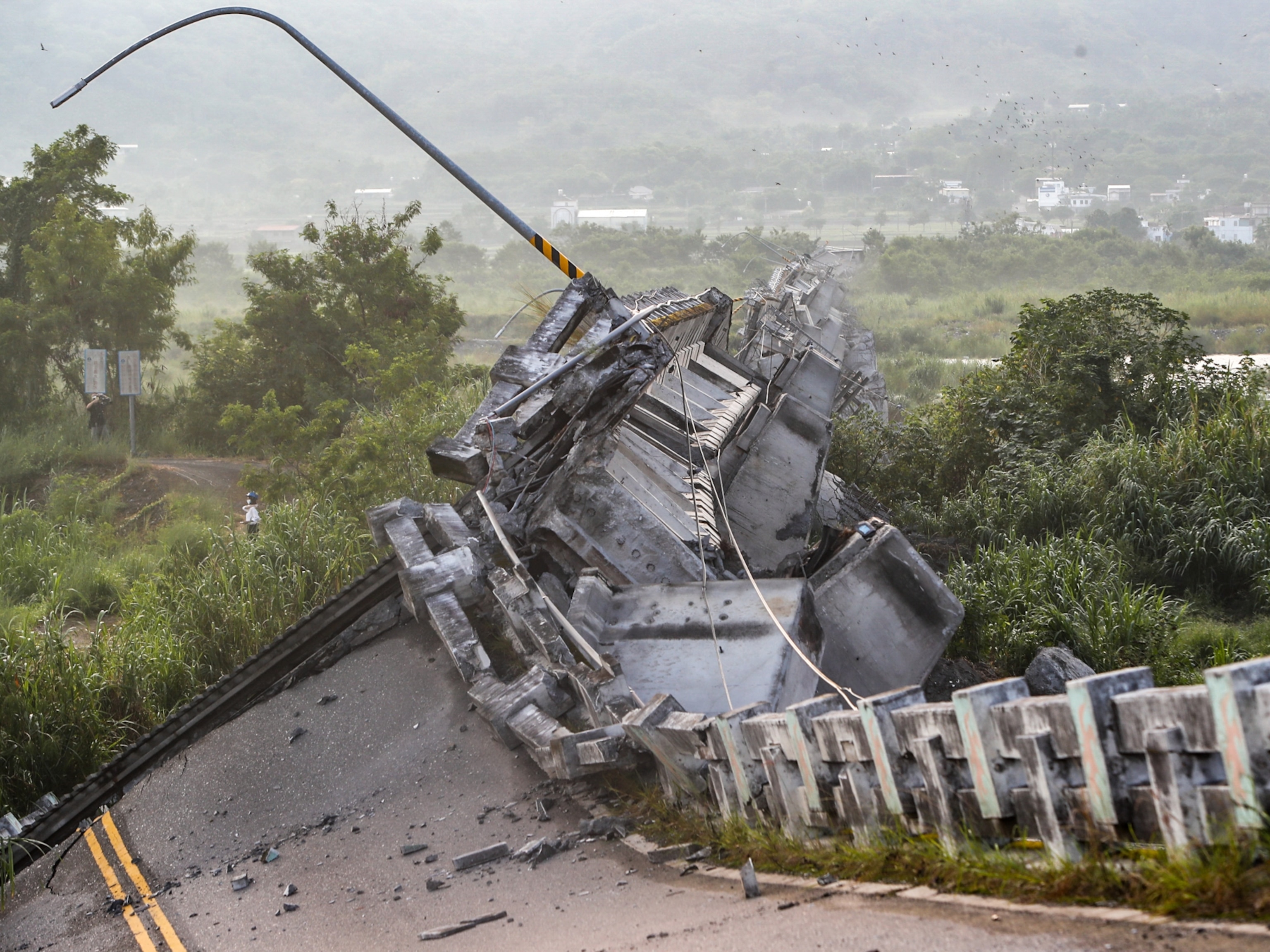
Heavy Rainfall Can Cause Huge Earthquakes
Rain-induced erosion loosens faults, scientist says.
Heavy rainfall can trigger earthquakes in what one scientist calls "disaster triggering disaster."
Shimon Wdowinski, of the University of Miami in Florida, first noticed a connection between storms and earthquakes last year.
The devastating magnitude 7.0 earthquake that hit Haiti in early 2010 came only 18 months after Haiti had been deluged by several hurricanes and tropical storms. (See "Haiti Earthquake Anniversary: Pictures Show Slow Recovery.")
And another large earthquake, a magnitude 6.4 temblor that rocked Taiwan in 2009, occurred only seven months after the area had been hit by Typhoon Morakot, which dropped 9.5 feet (2.9 meters) of rain in five days. Hurricanes are called typhoons in parts of Asia.
To put that in perspective, "that's about five times the average [annual] rainfall of San Francisco ... in five days," Wdowinski said last week at a meeting of the American Geophysical Union in San Francisco.
Quakes Triggered by Rain-Induced Erosion
To test the rainfall-earthquake link, Wdowinski dug through the past 50 years of earthquake and weather records for Taiwan, an island that experiences a lot of severe rainstorms and earthquakes.
He found that a magnitude 7.6 earthquake had struck in 1999, only three years after Typhoon Herb soaked Taiwan with 6.6 feet (2 meters) of rain.
Overall, his analysis revealed that Taiwan's large earthquakes—deemed as magnitude 6 and higher—were five times more likely to occur within four years after such storms than if the storms had had no effect.
The weight of the water itself does not trigger the earthquake—rather, it's the ensuing erosion from landslides, which subsequent storms steadily wash into the sea.
"There's less stress [on the underlying rocks], and it's easier for the fault to move," he said. "These are small changes, but are apparently enough to trigger the earthquake."
However, this doesn't mean typhoons spark earthquakes in regions where quakes wouldn't otherwise occur, Wdowinski noted. (See "Typhoons Can Trigger Earthquakes, Study Suggests.")
"The typhoon just determines the timing" of the quake, he said. The main driver that causes earthquakes is the slow process of plate tectonics.
Himalaya Monsoons Linked to Quakes
Other scientists are finding similar effects in the Himalaya, where summer monsoons dump heavy rainfall onto the Indian side of the mountain range.
The Himalaya were created by the movement of the Indian Plate, which is ramming northward into Eurasia, producing a giant fault zone marked by the mountains.
When the monsoons hit, a lot of water flows into the Indian lowlands, said Thomas Ader, a Ph.D. student at the California Institute of Technology in Pasadena.
The water's enormous weight causes the Indian plate to bend slightly under the pressure. That, in turn, causes the edge of the plate to move slightly.
"Imagine having a big book and bending it in the middle," Ader said. "The pages want to slide against each other at the edges."
(Also read: "Slimmer Indian Continent Drifted Ten Times Faster.")
During Asia's wet season, the bending offsets the building tectonic strain on the fault, reducing the short-term risk of earthquakes.
But in winter, the effect reverses as the lowlands dry out, letting the plate unbend, and the earthquake rate rises.
To date, there's no way to use the research for earthquake predictions.
Still, Wdowinski noted in a follow-up email, "It might be useful to issue a general forecast for a higher earthquake risk in central Taiwan after the next very wet typhoon."
Go Further
Animals
- How can we protect grizzlies from their biggest threat—trains?How can we protect grizzlies from their biggest threat—trains?
- This ‘saber-toothed’ salmon wasn’t quite what we thoughtThis ‘saber-toothed’ salmon wasn’t quite what we thought
- Why this rhino-zebra friendship makes perfect senseWhy this rhino-zebra friendship makes perfect sense
- When did bioluminescence evolve? It’s older than we thought.When did bioluminescence evolve? It’s older than we thought.
- Soy, skim … spider. Are any of these technically milk?Soy, skim … spider. Are any of these technically milk?
Environment
- Are the Great Lakes the key to solving America’s emissions conundrum?Are the Great Lakes the key to solving America’s emissions conundrum?
- The world’s historic sites face climate change. Can Petra lead the way?The world’s historic sites face climate change. Can Petra lead the way?
- This pristine piece of the Amazon shows nature’s resilienceThis pristine piece of the Amazon shows nature’s resilience
- Listen to 30 years of climate change transformed into haunting musicListen to 30 years of climate change transformed into haunting music
History & Culture
- Meet the original members of the tortured poets departmentMeet the original members of the tortured poets department
- Séances at the White House? Why these first ladies turned to the occultSéances at the White House? Why these first ladies turned to the occult
- Gambling is everywhere now. When is that a problem?Gambling is everywhere now. When is that a problem?
- Beauty is pain—at least it was in 17th-century SpainBeauty is pain—at least it was in 17th-century Spain
Science
- Here's how astronomers found one of the rarest phenomenons in spaceHere's how astronomers found one of the rarest phenomenons in space
- Not an extrovert or introvert? There’s a word for that.Not an extrovert or introvert? There’s a word for that.
- NASA has a plan to clean up space junk—but is going green enough?NASA has a plan to clean up space junk—but is going green enough?
- Soy, skim … spider. Are any of these technically milk?Soy, skim … spider. Are any of these technically milk?
Travel
- Dina Macki on Omani cuisine and Zanzibari flavoursDina Macki on Omani cuisine and Zanzibari flavours
- How to see Mexico's Baja California beyond the beachesHow to see Mexico's Baja California beyond the beaches
- Could Mexico's Chepe Express be the ultimate slow rail adventure?Could Mexico's Chepe Express be the ultimate slow rail adventure?




